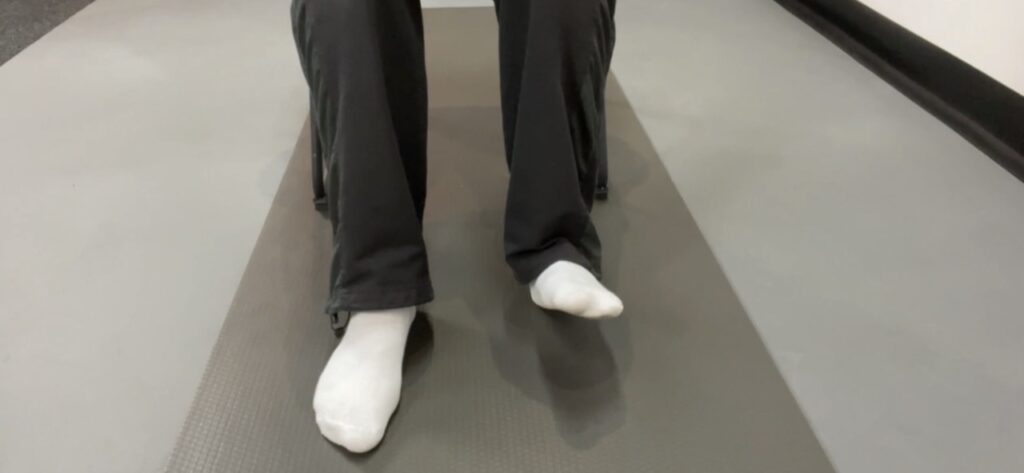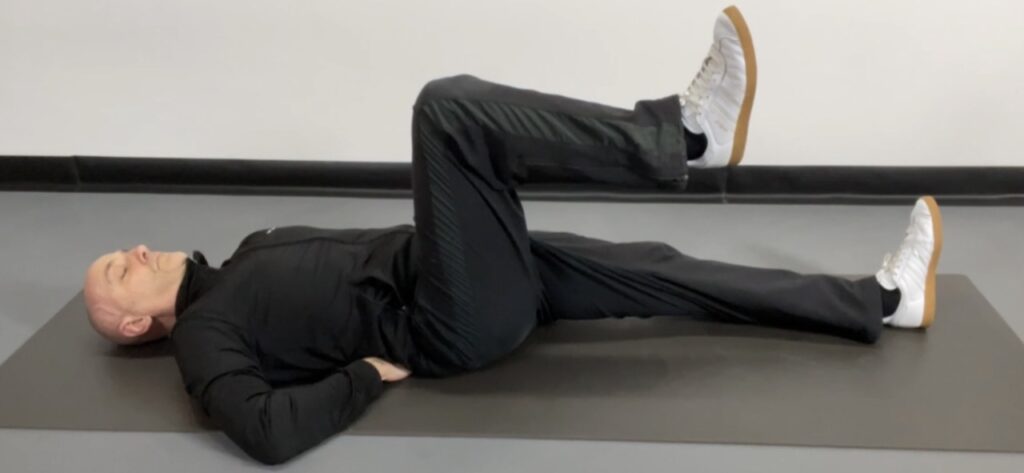In this post we discuss how to squat safely and effectively by measuring how deep you should go in the exercise.

Have you ever heard the maxim that in order to squat effectively you must put ‘your arse on the grass?’
In other words your butt needs to get as close to the ground as possible.
This type of one size fits all approach can leave you prone to injury.
There is no particular way that you should squat because, guess what? We’re all different!
For example, somebody with a long femur (thigh bone) will never be able to get that low in a squat. If they did they would likely fall over.
Their relatively long thigh would push their centre of mass so far back that getting their arse to the grass would look more like an accident than a squat.
For a detailed breakdown of why this is watch this video.
How to assess how deep you should squat
There are three key measurements to take.
1) How much ankle dorsiflexion do you have?
2) How much knee flexion is available?
3) What angle of hip flexion can you comfortably attain?
How to measure ankle dorsiflexion

In some cases squat depth is limited by ankle dorsiflexion. That is how far you can bring your foot towards your shin.
To measure this take a seat on a bench and lift each foot back towards your shin.
Make a note of the angle between your shin and the top of your foot. Although gravity and perhaps an enthusiastic exercise professional will encourage you to breach this, don’t.
How to measure hip flexion

Now lay on your back and slowly bring a bent knee towards your chest. Don’t pull on your leg to help move it, use muscle contraction only.
Place a flat hand in the small of your back to monitor for trunk movement.
When you feel your lower back begin to push against your hand, you’ll know you’ve reached your hip flexion limit.
Make a note of the angle between the top of your thighs and your trunk before repeating on the other side.
How to measure knee flexion
Lastly, while in this hip flexed position actively bring your heels towards your butt. Again make a note of the angle between the back of your thigh and your lower legs.
Now you have the active range of motion of your ankles, hips and knees.
How to integrate those measurements into the squat
The next step is to integrate that information into the exercise itself. This is the tricky bit and will require a little practice and a mirror.
Get a feel for exactly where these positions are and if you’re in any doubt apply caution.
If you use slow repetition speeds to begin with you will be less likely to breach these limits.
Summary
Your results will improve and your risk of injury / niggles will reduce if you respect your current range of motion limits during the exercise.
Remember, if your muscular system isn’t completely in control of the movement then you are likely stressing the structures of the joints themselves. This may lead to issues further down the line.
That’s not to say you shouldn’t work to improve your current limits, but do that away from the exercise itself.